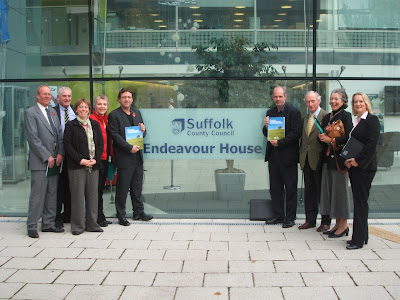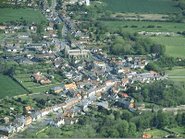Suffolk County Council
Children & Young People’s Services
_________________________________________________
Endeavour House
8 Russell Road
IPSWICH
IP1 2BX
Tel: 01473 264629
Fax: 01473 216889
Email: phil.whiffing@cyp.suffolkcc.gov.uk
Web:
http://www.suffolk.gov.uk
Our Ref: PW/2008-12-11JMeikle
Date: 16 December 2008
Dear Jim,
Draft Proposal for Stour Valley Community CollegeMany thanks for the meeting we had at Endeavour House on December 4th between members of the CLARE group and members of the County Council cabinet. I know that Phil Whiffing has met with your group subsequently to work through the various figures and analysis in more detail. I am now writing to you with the official County Council response to your proposal, as agreed.
Firstly, it is important to say that the County Council recognises the commitment, enthusiasm and effort that has gone into the preparation of the proposal. Members of the cabinet, and my own team, have all been very impressed by the quality of thinking and presentation put into the proposal. There is no doubt that if we were actively commissioning a new school in the area, we would want to work with your group to take this further.
Unfortunately, after careful examination of the proposal, we feel that:
· There is no evidence of the need for additional secondary school places in the area,
· Local secondary schools already provide high quality education,
· There is concern that the size of the proposed school is inconsistent with the Council’s
agreed principles for school organisation. Furthermore, if the school reached a size
consistent with those principles, another school could fall below the preferred size and the quality of education offered to its students could be compromised,
· An additional school would increase capital and revenue costs to the detriment of existing
schools.
· While for those children who live in Clare there would be less travel, the majority of the
children would need to travel similar distances,
· An additional school would add to the complexity of delivering the 14-19 entitlement
adding to the travel required.
I must re-emphasise, that the proposal would be welcome if there were a need for additional school places in the area, or a need to address the quality of secondary school provision. However after considering the factors above, it is not possible to recommend Local Authority support for this proposal. The Leader of the Council and portfolio holder for children, young people and schools are fully in agreement with this position. I have attached a document giving a more detailed feedback on the proposal.
The County Council is keen to restate its commitment to ensuring viable primary education in Clare, and is actively working with the headteacher, chair of governors and others to confirm the best possible site for the expansion of the first school into a 4-11 year primary school. The preferred option would seem to be an expansion on the current town centre site. Although the details are not yet finalised and the scheme is not yet signed off, this is the option being taken forward currently.
The Councillors were also very interested in the wider community aspects of the CLARE group’s proposal. While the primary school will be larger and able to provide extended services, the County Council would also like to work with St. Edmundsbury Borough Council and other potential partners to maintain and extend the community activities that currently occur at the Middle School. We would be very happy to meet with you and the group in the New Year to consider how this might be taken forward.
Until then, many thanks again for everything you and the group have done. I know this is not the answer you were hoping for, but I hope that you are reassured that your proposal has been given very serious consideration and that there are other possibilities, which we could work on together.
I am sending a copy of this letter to the Department for Children, Families and Schools, and to the local MPs. As I mention the primary school, I am also copying this to the headteacher, Mrs Horner, and to Essex County Council.
Yours sincerely
ROSALIND TURNER
Director for Children and Young People
Cc: Caroline Kerr, DCSF
Tim Yeo MP
Richard Spring MP
Mrs J. Horner, Clare primary school
Graham Toombs, Director of Children’s Services, Essex County Council


